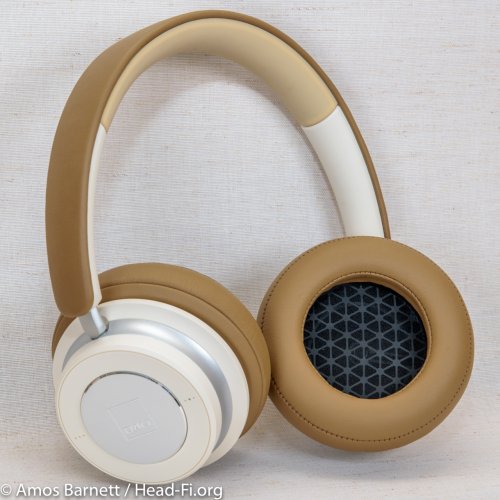Late last year I received an unexpected message from DALI, asking if I’d like to try their new headphones. As I was heading to the Tokyo FUJIYAAVIC Headphone festival, I quickly arrived for a pair of IO-6. The other headphones in DALI’s stable are the IO-4, which differ only in that they don’t have noise cancelling.
Arriving just before I had to leave, the unboxing was an interesting experience. Opening up the box, a wordless (presumably for international convenience) guide flap greets you with essential information. Aside from an instruction manual and sticker, everything else is in the case.

The first surprise was that they don’t fold. While that makes them less fiddly to put away versus something like the FiiO EH3C, it makes them more bulky. That had them taking up a bit too much room in my Tom Bihn Synapse 19, which seems to end up stuffed to its limits on these trips.

Also surprising is the lack of LDAC support. While ultimately I don’t consider there to be a significant enough benefit for a pair of headphones like these, especially if the intended use is in a noisy environment where the benefits of a supposedly better codec would be extremely questionable, it would have been nice to see.
The IO-6 is reasonably light and comfortable. It doesn’t quite match the absolutely lovely earpads of FiiO’s EH3C (which is in for review) but the basically padded headband and suitably thick (removable and replaceable) earpads were comfortable enough.

Inside the liner pouch of the case lid are a USB A to C cable, a 3.5mm cable, and an airline adaptor. The latter was most welcome on flights where in-flight entertainment is available, as even a half-decent pair of noise-cancelling headphones beats the heck out of the cheap headsets one is normally provided with.
The IO-6 can be used in 3 ways: Wireless via Bluetooth, wired via the 3.5mm cable to an analog headphone amp, and wired via USB. Of those modes, via the 3.5mm cable can be done with the power off if the battery is low. With or without the power on, an analog source requires a volume control, as it disables the built-in control. Via USB, input up to 24/96 is accepted.
Set-up and control
If you’ve set up Bluetooth headphones before, the story is much the same with with IO-6. Nicely, they have a physical on/off switch, though it is really a soft-power switch disguised as a hard-power one. Really, the headphones always drain at least a very tiny amount of power. In my use of them, I could leave them for weeks without the battery going flat.
Not half way around the right cup from the power switch is a button that cycles through the noise cancelling modes: Off, noise cancelling, and “tranparency” (monitor mode) which passes through background sounds for use in situations where hearing what is going on around you is important. Between those buttons, lights for Bluetooth and power respectively use colours to indicate the status of the headphones.

On the right cup, the centre silver area is a physical play/pause/answer calls button, and the areas immediately above and below are also physical buttons for volume up and down. That keeps the overall operation simple and is, at least for me, less vague than the swipe gestures some headphones have.
Most uniquely, the driver in the IO-6 uses a DALI-designed paper cone! Along with that was the pleasant surprise that the tuning is rather unlike other well-known brands of noise cancelling headphones. However, the noise cancelling is not as good as can be had from Sony or Bose. Allow me to explain.
Sound
With a little variation between wired and wireless modes, as well as with noise cancelling in noisy environments, the IO-6 has a fairly consistent, relatively neutral tuning, without an emphasis anywhere in the frequency range. It managed to deliver the bass rumble on Truth is a Beautiful Thing by London Grammar. Vocals were delivered pleasantly well, as were instruments, neither forward or recessed.
Mirrors, by the SEED Ensemble, a UK jazz outfit, was delivered with a pleasant degree of competence. Drum hits had a reasonable amount of smack, instruments were not overwhelmed by the bass and cymbals were clear enough without being overwhelming.
The treble is the only area where I noticed a significant difference. With the headphones switched on, the treble was spot-on for me, with enough sparkle, but never fatiguing. However, in wired mode with the power off, even with a good headphone amp, the treble is slightly harsh. Likewise in USB wired mode from my computer. In the case of USB, this could simply be the result of electrical noise interfering with the sound.

However, while the sound balance was spot-on and the delivery pleasantly capable, there was a degree of veil over the music, even in the quiet of my office, the music sounding slightly smothered, regardless of set-up. The IO-6 simply isn’t going to match something like the Drop Sennheiser HD6XX or HiFiMan Sundara, both of which are cheaper (at current retail) than the IO-6. Though both are open-backed headphones only suitable for indoor use in a quiet space.
Of that, the IO-6 has reasonably good passive noise cancellation. Thankfully, switching on noise cancelling doesn’t harm the sound quality. On an airplane, however, it did a great job of knocking out the background rumble of the engines, leaving only some high-pitched hiss, but not enough to make listening to music unpleasant. Most importantly, the noise cancelling didn’t ruin the quality of the treble.
Every time I’ve flown with in-ear monitors, interference from background noise has made the treble unpleasant, and listening for more than about an hour uncomfortable. Noise cancelling headphones solve this, and it was far easier to listen for extended periods with the IO-6. Whether AAC from my iMac or LDAC from one of the various portable players I have here, music was represented pleasantly enough for me to enjoy listening, even to good jazz and classical, where normally I’d want for better sound quality.
Overall, the DALI IO-6 bucks the trend of bass-strong noise-cancelling headphones with a balanced, and somewhat nuanced sound, while still delivering very good, if not excellent noise-cancelling. The retail price is high, and this is definitely a pair to look out for at a discount.












